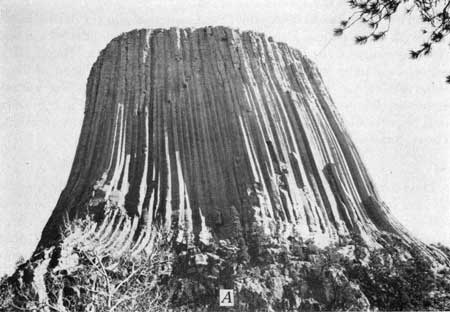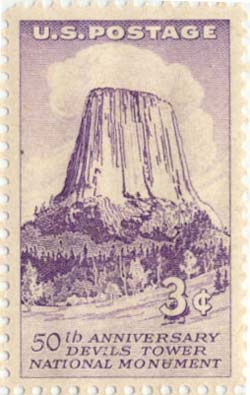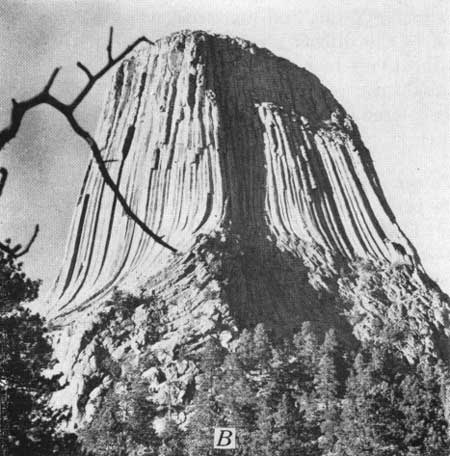The ice path across the Clear Creek went soft before we had a chance to cross it. So we set out on one of our hills walks, but shorter. We cut through Deb’s yard, said soft hellos to her yellow Lab – some guard dog – asleep in the sunroom window.
We set our path up a twisted sage bush hill, set our hearts on the clinker red top. Feet sinking into the Eocene, we comb the volcano-ash-soft beach sand for seashells and find plenty. Snails mostly, not yet agatized, not yet fossilized, their epochs old shells empty curlicue recesses in the sedimentary rock. Some things are very difficult to photograph: in the grainy twilight, a slab of snail shell stone split and gripped by a thick grey gnarled sage bush trunk. And some gifts are very difficult to explain. “I’m already planning my defence,” Karen says, her fists full of snail shell stone Christmas presents.
We slip and slid up a steep slope, setting off loose red rock showers, saying: Be careful! You be careful too. Okay. Ack. Perhaps this isn’t the best route. Switchback!
Funny how it’s only once you’re at the top that you see the easy route up. And that you haven’t taken it.
Just when we thought we’d seen it all, hill-wise, the hill behind Deb’s house instantly becomes our newest most favourite hill, with our newest best vista ever. Karen says, “Like how every new thing we see makes all the other stuff we’ve seen look like crap.”
The sun’s setting in every direction. I’m changing film fast, squeezing off iffy, high-contrast shots. We know better than to linger, what with Nora’s jogging adventure fresh in our minds: It was getting dark so she took a short cut that seemed like a straight line but then there was a creek to cross, some fences to climb, so many obstacles between Nora and the road. Plus, we’ve been reading and rereading Donna Tartt’s Secret History; we know what happens to scholars when time speeds up during late night back woods bacchanals. We don’t know any ancient Greek, but still, we’d hate to wind up killing a Vermont farmer on our way back to the ranch.
Instead of going back the way we came, we decide to follow the ridgeline home. Our sightline runs right down Big Red Lane to the Big Red barn. There’s a trail. “That’ll be our excuse,” I say. “When some rancher come out of nowhere with a shotgun… we say: But there was a trail!” Karen’s been reading Hemingway’s safari stories. She warns me not to sleep with the white hunter guide: “Like how in The Short Happy Life of Francis Macomber, I kill you way out here were there are no witnesses and then pretend it was an accident?” She says this in a singsong little kid voice which makes it sound all that much more sinister. “Remind me to take that Hemingway away from you.”
We come down off the ridge into a wide shallow flat that slopes down toward Ucross. The sky’s quite dark now, with only an orange rind of light left along the western ridges. Grateful for the flattening terrain and the rising moon, we lope along talking Donna Tartt again. My favourite thing about the bacchanal is how barely it’s described, how none of the characters will talk about it after. Karen says, in the horror movies the scariest parts are before you even see the monsters, when they’re just alluded to.
We stop short. There’s a pelvis bone in our pathway. Robert Johnson sings: “I’ve got stones in my pathway and my road seems dark as night.” But a pelvis in our pathway? We pick it up; hold it high, big, clean, and white against the dark night hills. We’ve seen plenty of small animal bones on our walks, but nothing like this. What do you think? Deer? Or cow? Seems big for deer. The mule deer are bigger than the whitetail. I don’t know. Maybe cow. Karen says: See, if this were a horror movie this one bone would be the stand in for all kinds of terrifying things.
At that moment we turn. Out of some dumb animal premonition. We turn our heads to the right and see, glimmering dull white amid the twisted night-black sagebrush, a field of bones. And, I’ll never forget this, the hulking massive back of some downed beast.
I grab Karen’s wrist. She drops the pelvis. We scream! And start running. And keep screaming and keep running. Until finally our editorializing instincts kick in: Okay, did you see that too? Yes!!! Wait, what did you see? Bones! Oh my god me too. Did you see the carcass? What carcass? Never mind, there was no carcass. Was it a deer or a cow? I don’t know. I’m pretty sure I saw duplicate bones. Like there’s more than one animal. Way more. How long does it take for bones to get all white like that? Those bones have been there a while. But the carcass is fresh. Was it… all in one piece? The head was… at an angle. But if animals had killed it they would have eaten it, right? Right. Why would multiple large animals keep dying in the same place? Did they trip? Is there a sinkhole? A portal? Clearly that field is haunted. Well, it is a bone field after all.
By now we’ve slowed to a winded trot. We keep looking over our shoulders.
Isn’t it ominous how that event perfectly dovetailed with our conversation?
Notice how it appeared so suddenly, just like in the movies.
Notice how it’s the full moon and everything.
Even these bails of hay look creepy.
Yeah! How come we never noticed the hay’s haunted before?
We’re coming up to the road, right where we intended to, when I step on something; it sticks to the bottom of my shoe. I try shaking it off, scrapping it off, thinking it’s a clod of dirt or dried shit or something, but it won’t come off. Oh man, now my shoe is haunted! I stop to examine this latest development. It’s some kind of saddle decoration – a silver circle attached to a leather circle. It’s a haunted cowboy thing! It found you! By sticking itself into my shoe. With a nail! I like how it stuck itself into your shoe but not into your foot. Yeah, I like how it didn’t give me tetanus!
The short stretch of US14 from Big Red Lane to the schoolhouse is a bewildering sequence of orange, yellow, red lights; high-speed passing gusts, gearshifts, and tires whining past us. All haunted.
A last low swath of fuchsia sky sets up shop behind the cottonwoods.
The trees are taller than usual, wouldn’t you say?
How are we going to explain this to the others?
The first thing we have to do is wash the haunt off our hands.
I hope there’s no red meat for dinner.
There’s buffalo meat for dinner. Not the best night for it. Luckily Deb’s there; she knows all about the bone field. It’s a dump, she says. That makes sense. A cow dies in the field and the rancher has to put it somewhere. Or else the other cows become demoralized. I imagine. This perfectly reasonable explanation does allow one to sleep at night. But it doesn’t mean the bone field isn’t haunted. It totally is.
Some stories have, in their retelling, diminishing returns. Karen and I keep telling the story of the bone field to each other because we know how scary it is.
She came into my studio for lunch today, saw my spread of snail shell rocks and said: “A museum of yesterday!”
I read her a paragraph from The Snows of Kilimanjaro. She just read that story, but still she said: “Did you just write that?” See why Karen’s my favourite? Hemingway wrote this in 1927, but it’s obviously about haunted yesterday:
“What about the ranch and the silvered grey of the sage brush, the quick, clear water in the irrigation ditches, and the heavy green of the alfalfa. The trail went up into the hills and the cattle in the summer were shy as deer. The bawling and the steady noise and slow moving mass raising a dust as you brought them down in the fall. And behind the mountains, the clear sharpness of the peaks in the evening light and, riding down along the trail in the moonlight, bright across the valley. Now he remembered coming down through the timber in the dark holding the horse’s tail when he could not see and all the stories that he meant to write.”
Ernest Hemingway, The Snows of Kilimanjaro, 1927
. . . . .
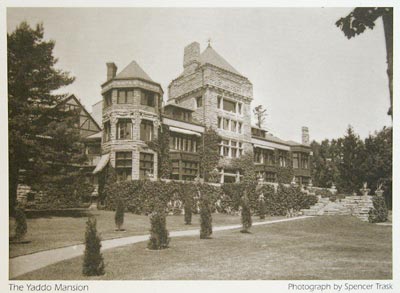
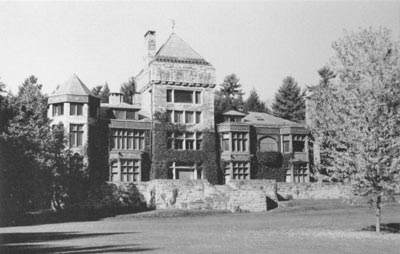
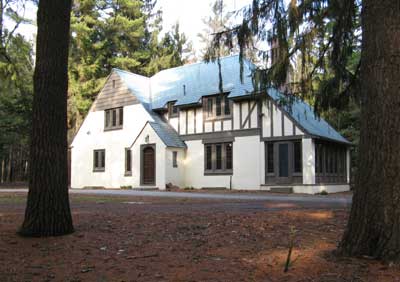
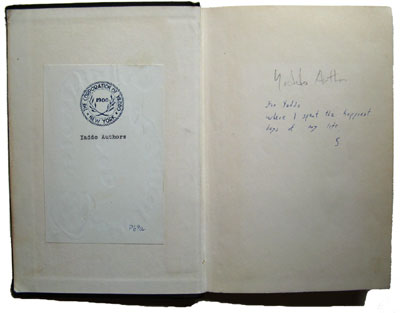
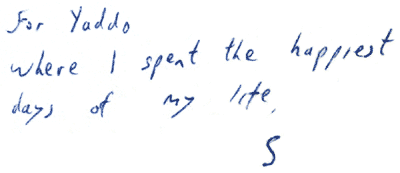
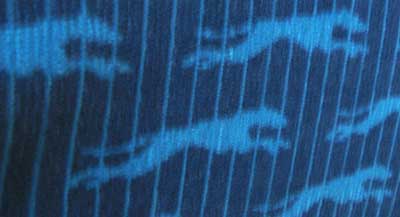 Rain cratered the Saratoga Springs bus stop parking lot puddles. I found a taxi right away, but the driver had never head of Yaddo either. And he was al local. I was starting to think that Yaddo was fictional. Makes sense considering it’s a place you hear about most from fiction writers. I quickly learned, from my chatty cranked-up cabbie, that he was really a bricklayer – in the union and everything, he assured me – who had only just started driving a cab after his recent injury. Luckily I had consulted a number of online maps prior to my departure and was able to tell him where to take me: it’s on Union Avenue, past the racetrack. It’s an estate; look for a gate, or an archway or something. So what are you going to do at Ya-doo; he wants to know. It’s a place for artists and writers… You mean poets? Yeah… Well, it turns out my fast-talking bricklaying cabbie is a poet. What do I want to hear – a wisdom poem, a love poem, or what? Okay, give me your best wisdom poem. And off he goes. A street poet. A white rapper. Very 8 Mile.
Rain cratered the Saratoga Springs bus stop parking lot puddles. I found a taxi right away, but the driver had never head of Yaddo either. And he was al local. I was starting to think that Yaddo was fictional. Makes sense considering it’s a place you hear about most from fiction writers. I quickly learned, from my chatty cranked-up cabbie, that he was really a bricklayer – in the union and everything, he assured me – who had only just started driving a cab after his recent injury. Luckily I had consulted a number of online maps prior to my departure and was able to tell him where to take me: it’s on Union Avenue, past the racetrack. It’s an estate; look for a gate, or an archway or something. So what are you going to do at Ya-doo; he wants to know. It’s a place for artists and writers… You mean poets? Yeah… Well, it turns out my fast-talking bricklaying cabbie is a poet. What do I want to hear – a wisdom poem, a love poem, or what? Okay, give me your best wisdom poem. And off he goes. A street poet. A white rapper. Very 8 Mile.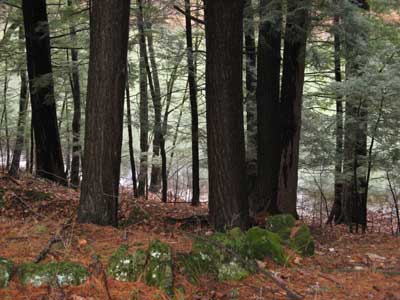 Just when I think he’s going to challenge me to a poetry slam duel right there in the cab, he spots the gate. Ya-doo! he cries. Good eye. We turn in onto a narrow road that winds through close tall evergreens, across a river, past a waterfall… So you’ve never been here before? No. Damn! Now that’s a mansion. We take a few wrong turns and wind up out on the road again. He pulls a u-turn across four lanes of traffic and then another one and there we are back at the gate. When we finally find the office I ask him to wait till I find someone who can tell me where to take my luggage. He comes into the office with me. We’re both impressed by how old the building is. This wall is plaster, he says. You couldn’t punch a hole through it if you tried. Good to know. A few minutes later, and not a moment too soon, the programme coordinator gets into the cab with us and we proceed deeper into the estate. At the dreamy creamy cottage that will be my home for the next 5.5 weeks, we get out and I ask my cabbie what I own him. Whatever you want to give, he says. This one’s off-meter.
Just when I think he’s going to challenge me to a poetry slam duel right there in the cab, he spots the gate. Ya-doo! he cries. Good eye. We turn in onto a narrow road that winds through close tall evergreens, across a river, past a waterfall… So you’ve never been here before? No. Damn! Now that’s a mansion. We take a few wrong turns and wind up out on the road again. He pulls a u-turn across four lanes of traffic and then another one and there we are back at the gate. When we finally find the office I ask him to wait till I find someone who can tell me where to take my luggage. He comes into the office with me. We’re both impressed by how old the building is. This wall is plaster, he says. You couldn’t punch a hole through it if you tried. Good to know. A few minutes later, and not a moment too soon, the programme coordinator gets into the cab with us and we proceed deeper into the estate. At the dreamy creamy cottage that will be my home for the next 5.5 weeks, we get out and I ask my cabbie what I own him. Whatever you want to give, he says. This one’s off-meter. 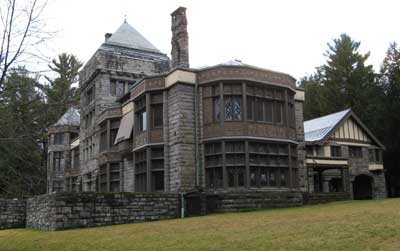 And so now all of a sudden I’m here. Yaddo does exist after all. The mansion is closed for the winter, though it hardly feels like winter. It’s January and the grass is green. I live in Pine Garde, a house much lovelier than its name, which is evocative of cleaning supplies and deodorants. My studio is in the sun porch. My other studio is in the back off of my bedroom. Two studios? Yes, and an en suite bathroom. And a kitchen and living room with a working fireplace and only one other writer living and working in the house. Could I be dreaming all this? It is quite possible that I am.
And so now all of a sudden I’m here. Yaddo does exist after all. The mansion is closed for the winter, though it hardly feels like winter. It’s January and the grass is green. I live in Pine Garde, a house much lovelier than its name, which is evocative of cleaning supplies and deodorants. My studio is in the sun porch. My other studio is in the back off of my bedroom. Two studios? Yes, and an en suite bathroom. And a kitchen and living room with a working fireplace and only one other writer living and working in the house. Could I be dreaming all this? It is quite possible that I am. 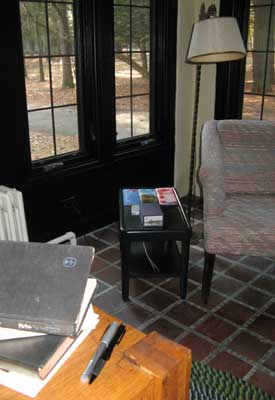 I arrived at Yaddo exhausted, trailing a string of late nights, sleepless nights, groggy mornings and busy days. I’m sure I made a less than clever first impression. I kept re-asking people’s names at dinner but they were nice about it. Most imagined Montreal was a long day’s travel from Saratoga. And in an attempt to justify my mental sluggishness I did little to dispel this myth. Geographically Montreal and New York City are the same distance from Saratoga Springs. Culturally, New York is very close to here. Many of the New Yorkers in residence have been to Montreal and love the city. I am the only Canadian here at the moment and although I have not traveled a greater distance than most to get here, yesterday, after dinner, perusing the library of Yaddo Authors, it came over me what a long journey it has been.
I arrived at Yaddo exhausted, trailing a string of late nights, sleepless nights, groggy mornings and busy days. I’m sure I made a less than clever first impression. I kept re-asking people’s names at dinner but they were nice about it. Most imagined Montreal was a long day’s travel from Saratoga. And in an attempt to justify my mental sluggishness I did little to dispel this myth. Geographically Montreal and New York City are the same distance from Saratoga Springs. Culturally, New York is very close to here. Many of the New Yorkers in residence have been to Montreal and love the city. I am the only Canadian here at the moment and although I have not traveled a greater distance than most to get here, yesterday, after dinner, perusing the library of Yaddo Authors, it came over me what a long journey it has been. 
